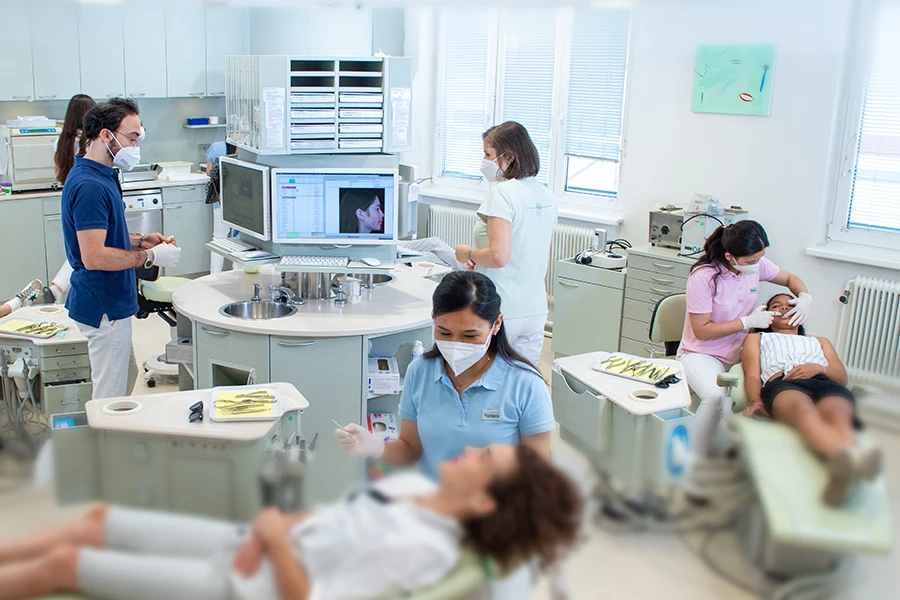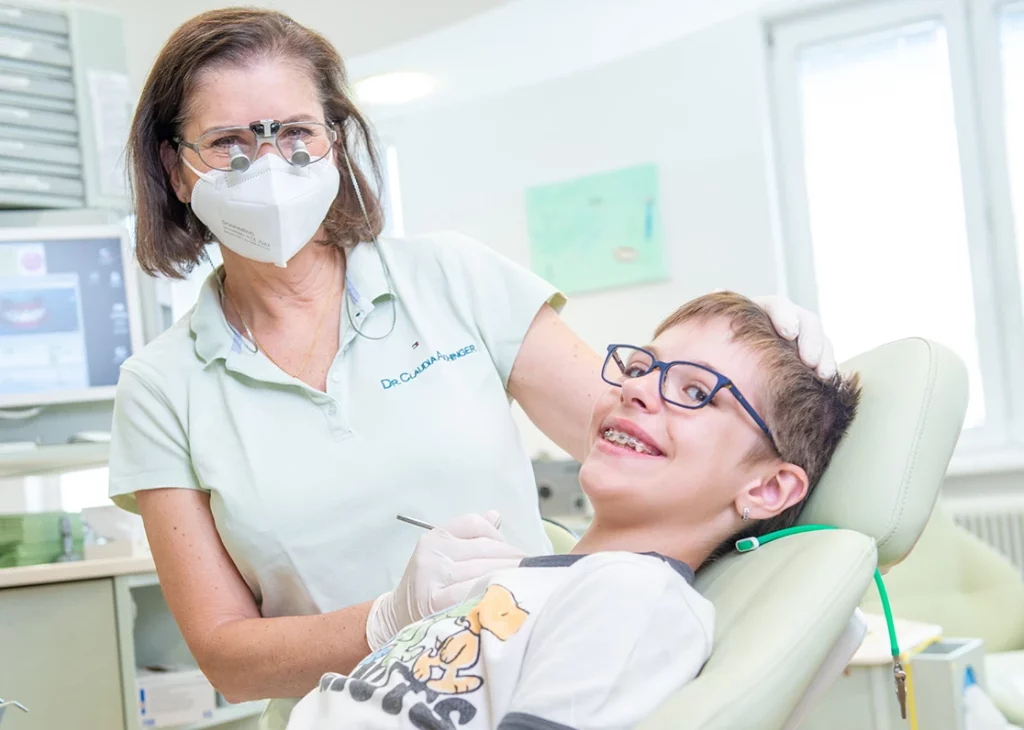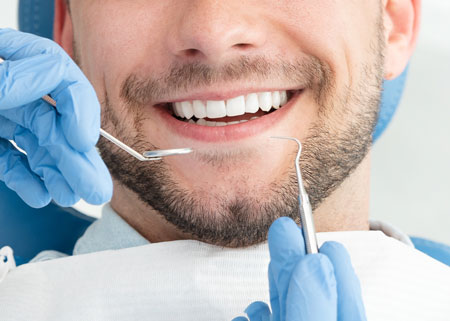Orthodontics
With competence and proper technique
The goal of orthodontic treatment is much more than to give you a beautiful smile. In this section of the website we would like to give you an insight into what orthodontics can achieve, when you should seek treatment and what you can expect from your orthodontist.
Objective
For a permanently healthy and seamlessly beautiful set of teeth
Most people visit the orthodontist because they want a beautiful smile.
Although an attractive smile is an important goal of treatment, orthodontics also takes care of the long-term health of your teeth .
Correcting your bite can prevent problems in the future:
- Straight teeth make dental care easier – that means caries prevention.
- Good tooth position reduces the risk of gum disease.
- Good tooth position reduces abrasion of the teeth.
- Correct interlocking protects the jaw joints and helps to relieve the neck and chewing muscles.
- An improved lip closure reduces the susceptibility to colds and contributes to the prevention of tooth decay.
- Changing the position of teeth and expanding a narrow upper jaw helps improve atypical swallowing, tongue position and tongue function.
- Improved chewing performance helps to normalize digestive processes.

Expectations
We improve functionality while increasing attractiveness
There are different ways to treat orthodontics and different orthodontists may have different goals.

What you can expect from us
What should you pay attention to?
Although an attractive smile can be achieved simply by straightening teeth, the new smile will not last long unless the bite is corrected at the same time. Problems such as crooked teeth, gum problems (periodontitis), temporomandibular joint disease (TMD) and tooth wear will occur or recur if the function of your bite is not corrected at the same time.
Our approach
I focus on providing my patients with good masticatory function AND an attractive smile . It is therefore of the utmost importance to me to ensure that at the end of the treatment your teeth are embedded in healthy bone and in correct relation to your temporomandibular joints. You can only enjoy your smile for a long time if your chewing apparatus works properly.
Treatment for children
With the utmost care and sensitivity
The treatment method for children depends on many factors that the orthodontist must consider, such as:
- Age of the child
- Development of the child
- Tooth position
- Health aspects
- Objective

Treatment in deciduous and mixed dentition
Children who still have milk teeth are only treated to provide the best possible environment for the permanent teeth to erupt. The aim of the treatment is either to correct the jaw position so that the upper and lower jaws fit together well, or to create space for the permanent teeth to erupt, or to regulate serious misalignments of individual teeth. It is not our goal to aesthetically improve the alignment of the incisors in mixed dentition. During this phase of life, incisors often have gaps or are rotated. These are perfectly natural processes and often improve without treatment. Treatment in mixed dentition generally lasts between 12 and 18 months.
Treatment of the permanent dentition
The position of the permanent teeth is mainly corrected with fixed appliances, mostly after the eruption of the second molars (“12-year molars”). The average duration of treatment is about two years.
Treatment for adults
We’ll straighten your teeth and make you feel better
What you should consider during orthodontic treatment
Beautiful teeth not only signal youthfulness through an attractive smile, but are also a symbol of health and vitality. It is important to note that teeth stay healthy longer when they are in the right position.
Crooked teeth that are not caused by misaligned jaws can be corrected with orthodontics alone. If desired, almost invisible braces can be used.
Of course, after the end of the growth phase, you can no longer intervene to “grow” as is the case with children. If the upper and lower jaw do not match in adults, the position of the jaw can be corrected with a combined orthodontic and maxillofacial surgery treatment. In this case, the orthodontist first straightens the teeth with the help of braces, then the oral surgeon corrects the jaw position.
This treatment requires optimal cooperation between the orthodontist and the oral surgeon. In this way, excellent results can be achieved even in difficult initial situations.
videos
For a better insight into our work
How does a bit actually work? What happens when a tooth is misaligned? And how can we take corrective action? Our small video collection will inform you about this, giving you an insight into how the dentition and jaw work as well as our orthodontic work.









